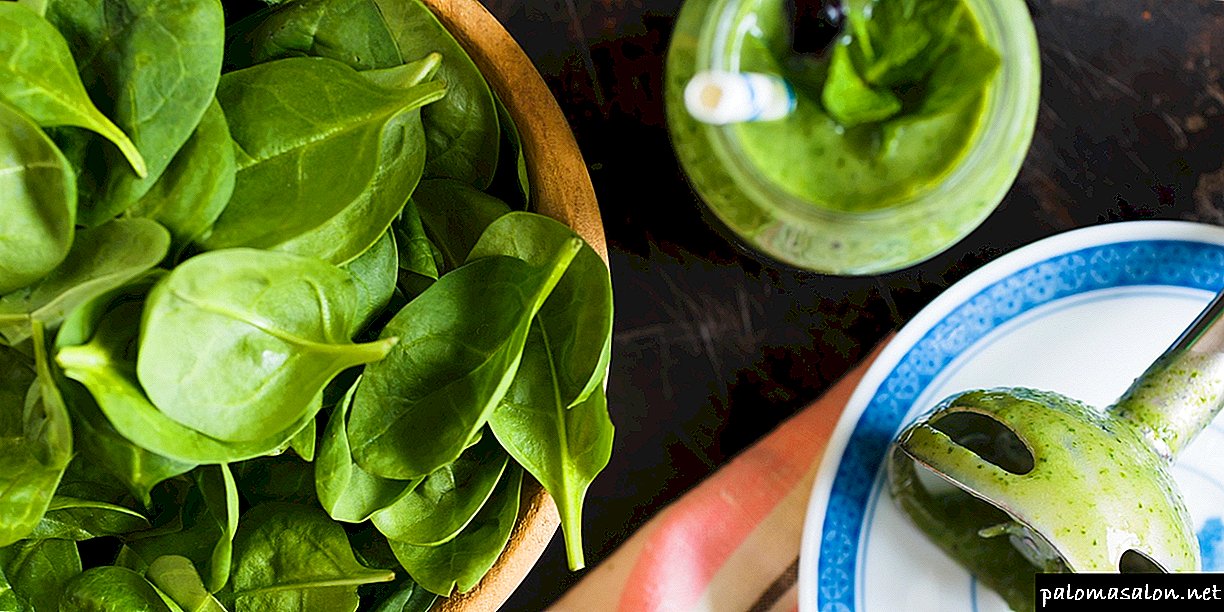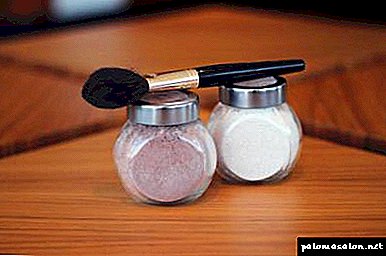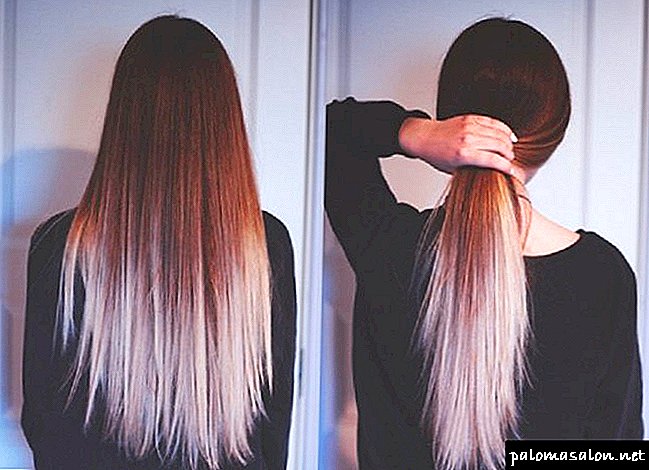As practice has shown, it is the paint with ammonia in the composition after henna gives an unpredictable result. Ammonia is an aggressive component that can react with a natural dye.
The resulting shade depends on the color you choose:
·Bright hues - you can get a marsh or even purple head of hair
· Red shades - wait for green reflections in the light,
· Black color - do not wait for a uniform distribution of color, most often the paint stains, and the sun gives reddish glare.
Whatever you choose, do not expect uniform coloring. All the worst cases that are described in colors on the Internet, just because of the choice of ammonia dye. In this case, it is better to wait for henna-colored hair to grow back, or to make a short haircut. Not an option? Then we are looking for another way to change the image!
Paint after henna: we exclude ammonia
It is the ammonia-free remedies that experts recommend when switching from natural to chemical dyes. Why? There are several reasons for this:
1. Substances in ammonia-free paint do not react chemically with natural pigments, which means you can be sure that you will not get unexpected shades.
2. Paint without ammonia after henna gives a more uniform distribution of coloring matter.
3. When reused, henna molecules in the hair shaft are replaced.
Professionals advise to try all the same shades of red after the first coloring, without drastically changing the shade on the head. So you reduce the likelihood of surprises. And only then, when the paint "takes root" on the hair, you can drastically change the image. Just do not expect that the paint will last for a long time, if less than two months have passed after henna staining, the chemical pigment will quickly wash out. But, again, this is a temporary phenomenon! To consolidate the result and "overcome" corrosive henna, repeat the staining with ammonia-free paint once a month, if you have blond hair, and once a month and a half - if dark.
Paint after henna: risk zone
Natural dyes best linger in straight, smooth and thin hair. If this is your case, do not expect that you will quickly get rid of henna's persistent pigment. Let's take a closer look at what type of hair is better not to risk and not to use chemical dyes.
·Light and blond hair. Your curls stronger than the rest are painted with henna, so it's dangerous for you to replace natural dyes with chemical ones. We advise you to wait when the henna slowly fades away. If there is no power to wait, and you are ready to take a chance - be ready that after the first dyeing your hair will shine with a marsh or purple color. Seek help from professionals, a specialist will be able to choose gentle dyes, and even paint over a failed option under his power.
·Dark and red hair. You are more fortunate than blondes. Your hair is more porous, and, it would seem, should better absorb henna. But, in practice, it's easier for you to get rid of it. Just do not choose light paint for the first chemical dyeing.
· Black hair. It is the easiest for you to repaint after henna, and if your curls still curl, then the natural pigment has absolutely no chance of lingering in the structure of your hair.
Paint after henna: prepare the soil
So that the result of dyeing with ordinary paint after natural does not make you sit at home, it is better to take care of washing the henna out of your hair beforehand. Yes, its enveloping properties are well known to everyone, but you can and should fight it! For this:
· Use deep cleansing shampoos. To enhance the penetrating effect of the detergent, add half a teaspoon of soda.
· After shampooing, use homemade rinses. Henna is not friendly with soda, apple cider vinegar, honey, cinnamon and nettles.
· Do oil wrap once a week. To do this, warm up a few spoons of oil in a water bath, then spread it over the curls and put on a warming cap for several hours.
What to expect from staining after henna?
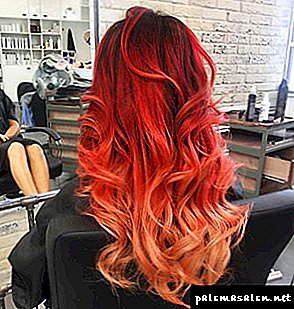
Henna is dangerous in that it gives an unpredictable result when dyeing with chemical dyes. In order not to spoil the hair, it is better to trust the professionals. You can enroll in the master at http://colbacolorbar.ru/coloring/. The colorist will wash the remains of henna, thereby neutralizing its action, and select the most suitable coloring composition.
Henna, as a natural dye, overgrown with myths. Someone praises her, someone, on the contrary, scolds her. The girls take the same ambiguous position when conceiving staining after henna with chemical paints. Consider the most common beliefs:
- Myth number 1 - henna neutralizes the paint. In fact, the result may be different, it all depends on the composition of the dye. Henna penetrates deep into the hair structure, making it thick and smooth. It is difficult for a chemical agent to consolidate on such a surface, so the paint either does not work at all or it does not lie unevenly,
- Myth number 2 - any dye gets a red tint due to henna. It's right. Chemical oxidant often enhances pigmentation. The result is a bright red color strands,
- Myth number 3 - after henna can not dye your hair for at least a year. It is not necessary to resort to such victims. The pigment is washed off after 3-4 weeks. In some cases, you need to suffer longer, but mostly henna is washed off fairly quickly,
- Myth number 4 - after colorless henna, you can immediately dye your hair. Although this powder does not stain the hair, it is still able to react with a chemical oxidant. In the case of colorless henna, you must wait at least 3 days,
- Myth number 5 - henna washed only naturally. In fact, there have long been means to neutralize the effects of henna. If the experiment with a natural dye was unsuccessful, there is no reason to wait a month or more until it is completely washed out of the hair.
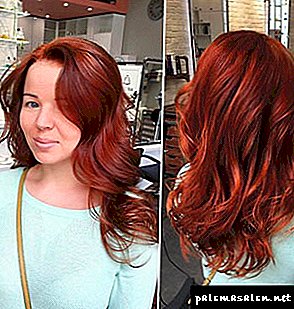
Although henna seems to be a harmless natural dye, sometimes it takes a long time to get rid of its effects. It is not uncommon for girls to get blue, green hairs instead of the desired color after painting with ordinary paint. To avoid such an incident is very simple - you need to trust the master of the beauty salon.
Of course, there are many popular methods to neutralize henna. But are they safe for hair? Only a professional will be able to choose the most effective means that will completely wash henna and not damage the hair structure. Beauty does not require sacrifice, it requires a competent attitude to itself.
Be always irresistible, and the Colba salon will help you with this!
With hair dye
However, there are many ways to fill unwanted colors. The fastest is to fill henna with high-quality dye for dyeing hair, it is only desirable to use dark colors, they are best placed on the hair and do not give an undesirable shade. With the help of such coloring you will get rid of the unsightly shade of henna, but it will not come completely out of your hair, you will only hide it.
Use masks
There are also national methods of henna removal, such methods include a mask based on kefir or milk. As you know, kefir, like any dairy product, has a large number of special bacteria that are used in various areas of life, and it is believed that they can deduce color pigments. Over the entire length of hair, apply kefir or sour milk, then wrap the hair in a film or cellophane, wrap a towel on top to create a thermal effect, and wait for the hour to pass. After this period of time, you can safely wash off the mask with shampoo and conditioner.
It is proved that all henna from the hair does not come off, but at least its shade will become much softer, and it will be possible to paint over it much faster after several such procedures.
Oil masks will help to make the shade softer, that is, the use of ordinary vegetable oil. After applying to the hair and washing the oil, the color gradually disappears. Whatever it was, it is only a means of softening the shade of henna, but, and it will be possible to paint over it only with the help of high-quality paint with a persistent color pigment.
Reasons for the failures
Resistant chemical dyes cannot be used immediately after henna. The composition of the powder, made from the leaves of lausonia, includes an orange pigment. It is activated when combined with water, especially acidified. Getting on the hair, colored particles are embedded in the natural keratin of hair, which helps them to firmly establish themselves.
Ammonia is a part of permanent paints. It is a potent chemical that reacts with henna or basma pigment. The result of this interaction may be fundamentally the opposite of the desired.
For example, shades can appear as follows:
- Lightening, highlighting or coloring in light shades gives a dirty swamp or purple tone.
- When using dye ginger color you can get a greenish sheen hairstyle.
- Attempting to paint henna with black color will give an uneven spotted tone, which in the sun will be distinguished by dark brown.
A sharp change of color after applying a natural dye gives not only unexpected shades, but also uneven coloring. This is due to the fixation of the vegetable pigment in the keratin layer of hair. Due to the increased density of the outer coating, artificial particles simply cannot penetrate deep into the strands.
How much to wait?
And yet, when can you dye your hair after henna? Specialists have different opinions on this. Some advise to wait until toned curls are completely cut off. This makes sense, because over time the plant pigment is not washed out, but simply darkens, so when in contact with ammonium compounds, it can manifest itself.
Other hairdressers recommend waiting a couple of months for the shade to lose its brightness. It is best to apply non-ammonia agents or tonics after this. They do not penetrate into the deep structures of the locks and do not enter into a chemical reaction with henna.
However, the first few times the new color will not last long. Over time, artificial particles will displace the vegetable, and their time will last.
Hair types
Important is the type of your hair, if we are talking about repainting after henna. The fact is that the pigment lasts longer or less, depending on the structure of the strands. To understand what to prepare for, carefully study your hair and the following information:
- If you have smooth and thin strands, it will be very difficult to wash the orange pigment. On such curls, it holds particularly firmly.
- It is extremely undesirable to repaint blond and blonde hair immediately after henna into blond. Vegetable colored particles are firmly embedded in the hair, so instead of a delicate wheat or cold ash color you can get green, marsh or purple.
- Red-haired girls and brown-haired women will be the easiest to remove the shade of copper. It is embedded in their structure fragile.
- Owners of curly and porous hair can remove the red pigment much faster. The keratin layer of their curls is loose, because the colored particles are fixed in it loosely.
- Owners of light long strands need to very well weigh their decision about henna dyeing. It is likely that the repaint their curls will succeed only after cutting off all the hair, previously treated Lawson.
Be prepared that not every hairdresser will undertake the staining with ammonia compounds after natural products.
The application of henna or Basma wizard must be warned, even if more than two months have passed. In some cases, even this time is not enough for the fading of the plant pigment and its neutralization.
Display color
Judging by the reviews of stylists and girls who used henna, the displacement of copper tone from the hair can be accelerated with the help of some means. If you need a 100% result, it is better to contact the salon where you will be decapitated. This is a procedure, the essence of which is to push the previously introduced pigment from the curls.
There are also more affordable options for washing. Make a composition that removes the red, you can at home. Prepare to ensure that after the first application of the henna shade does not go away, to achieve the desired result, you will need to carry out several procedures with an interval of 4-6 days.
In between, it is necessary to take care of the hair, to squeeze it with moisture and restoring components with the help of masks.
For greasy hair
Dilute three tablespoons of blue cosmetic clay with fatty home-made kefir or yogurt. Pre-fermented milk product is heated in a water bath. We combine the components so that the consistency of the mask resembles thick sour cream. Give brew a quarter of an hour. Apply to clean strands from root to tip, you can use a brush. We put on a plastic bag on the head, on top we warm it with a towel. Wash off residues with warm water after 20 minutes.
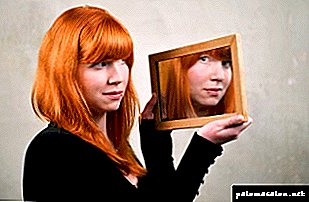 The displacement of color occurs due to the action of lactic acids present in kefir. They carefully remove the pigment and simultaneously saturate the strands with nutrients. Also, the mask copes with the excessive fat content of the dermis, it cleans the pores and regulates the sebaceous glands.
The displacement of color occurs due to the action of lactic acids present in kefir. They carefully remove the pigment and simultaneously saturate the strands with nutrients. Also, the mask copes with the excessive fat content of the dermis, it cleans the pores and regulates the sebaceous glands.
For normal strands
Mix one egg yolk with 50 ml brandy. Carefully interrupt the composition with a whisk. Apply it on washed hair from root to tip. We put on a warming cap with a shower cap and towels, leave the mask for 20 minutes. Wash off with warm water. If the smell of alcohol does not disappear, we carry out the last rinsing with the addition of a couple of drops of citrus ether.
Alcohol-containing products cope with artificial pigments. They also strengthen the hair roots and trigger their growth, because they accelerate blood circulation in the dermis. The yolk nourishes the strands with beneficial components and contributes to their rapid regeneration.
However, note that this tool can not be used if there is any damage or rash on the scalp.
For dry curls
Mix in a tablespoon of olive, burdock and castor oil, warm up in a water bath. Introduce a tablespoon of liquid honey and one egg yolk, mix well. Apply to clean strands, it is better to wash them with a shampoo of deep cleansing so that the scales of curls open. We warm the head, wash off the remnants of the product after three hours with a mild shampoo.
Experts advise the use of oils to all girls who suffer from excessive dry hair. They saturate the strands with useful components, fight against peeling and irritation of the scalp, accelerate the growth of curls, promote the regeneration of collagen and elastin. In addition, the mask gently removes henna pigments.
Acetic rinse
In one liter of warm water, add two tablespoons of apple cider vinegar. Pour the mixture into the pelvis. In it you need to dip the washed strands and hold for 7-10 minutes. After that, rinse the hair with clean water, apply a nourishing balm.
Rinsing with acidified water gives a result after 3-4 sessions. You will notice that the fiery color gradually fades away, and the strands become soft and silky.
This action ensures the presence of fruit acids in vinegar. They remove the pigment and close the hair scales, making them smooth. However, note that this tool has drying properties.
General recommendations
How to dye your hair after henna? If you want to avoid all sorts of surprises with shades, it is better to contact an experienced master who will help you choose the best option for the procedure.

Do not risk lightening or highlighting, because the result can be completely unexpected. It is safer to overlap copper as tones as close to the natural color scheme.
Also consider the following nuances when preparing for the procedure:
- Shampoos for deep cleansing or for oily hair care will help to quickly clean the red pigment. However, they reveal hair scales and dry them.
- After each shampooing, use natural rinses with brightening properties. A decoction of chamomile or nettle, water, acidified with lemon juice or apple cider vinegar will do.
- The sooner you start the henna washing process, the more chances you have to remove the maximum amount of pigmented particles. Over time, they are very firmly embedded in the curls, and bring them completely almost impossible.
- Any means for decaping (home or salon) dried strands and scalp. Between the procedures for removing color, be sure to make nourishing and moisturizing masks.
- Before using new formulations, test for allergies. Apply a small amount of the product to your wrist and wait 20 minutes. If there is no redness, itching, swelling and other negative reactions, you can use a mask.
- For hair care use professional cosmetics. It will quickly restore damaged structures after washing.
If you still decide to be painted with henna, choose quality products. Pay attention to the goods from "Lash". The composition includes not only Lawson, but also coffee, nettle extracts and other beneficial substances. From the use of this tool curls do not dry out, and the shade is calm and deep. The product is sold in the form of tiles with a beautiful embossment; it must be ground on a grater before use.
Draw conclusions
After staining with henna, the result may turn out to be completely different from what you expected. The vegetable pigment is manifested in different ways on the strands of each woman, as evidenced by the photos of girls who dared to change the shade with the help of lonsonia powder. Do not rush to immediately block the color with permanent means, so you only exacerbate the situation. Use professional or home formulations to remove the copper tone, and only then continue the experiments.
A competent approach to decamping will allow you to gently and gently eliminate unwanted shade and restore hair.
Use paint at least 3 months after henna
Henna is considered a completely safe hair dye. It gives the locks a gorgeous red color of varying intensity, a healthy glow. A distinctive feature of the natural pigment is that its molecules penetrate very deep into the hair structure. And when a rather aggressive hair dye falls on top of henna, natural and synthetic pigments, interacting with each other, give completely “incomprehensible” colors - starting from dull-green and ending with rich purple. So you should release the curls from the super-resistant shade!
The main rule of coloring curls after henna - the pigment, at least partially, must be “washed” with the strands. And it will take at least 3 months. Ideally, it is better to wait even a longer period of time - 6-9 months. Then the procedure of dyeing with ordinary paint will take place without surprises in the form of a bog-like strand.
There are only two options. Wait until the hair trusts, and the color of henna will not be so intense. Or include a special wash in the care that will “weaken” the red pigment.
Use special washes
Special washes, which remove the color of staining from the strands, are a real salvation for those whose procedure was not entirely successful. Professional cosmetics will help and those who want to quickly remove henna from the hair.
On sale you can find quite a lot of means-washes. Some have an instant action, immediately “washing out” the artificial color from the strands. Others, since they act on hair softer, will need to be used several times. But in any case, before buying is better to consult an experienced master. He will recommend a specific wash, which, without harm to the curls, will “free” them from bright henna. And the procedure itself is best done in the cabin.
Independently use the wash and it seems that she helped? Do not rush to immediately proceed to the next coloring. Check with the master, so that he assesses the condition of the hair and the result achieved using the remover. Most likely, after a rather aggressive cosmetics, the curls will require special care and time to recover.
Try folk recipes to wash off henna

If you are afraid to use "chemical" washes, you can try the effect of some popular recipes that will help remove the artificial pigment from the curls.
Many of the tips are very doubtful, because they imply treating the hair with alcohol, vinegar or laundry soap to wash the henna. This is a very radical measures, potentially dangerous to curls! Damaged hair with split ends, uneven color - this is what threatens the strands after applying aggressive alcohol or vinegar to them.
The most innocent of all tips for washing henna seem to be masks based on base oils or kefir. Apply the selected agent to the hair, let it stand for an hour, and then rinse it well with water. Additionally, you can rinse the strands with diluted lemon juice. You should not wait that the pigment will wash off after the first procedure. Such masks for the visible effect will have to do regularly.
Include deep cleansing shampoos
While waiting for the "washing out" of henna from the hair, in home care, use deep-cleaning shampoos. Means of such a plan are not recommended for use with colored curls, since they not only quickly and effectively clean the strands and scalp, but also wash off the artificial pigment. But you need this!
Experts advise not to use deep cleaning shampoo regularly. Cosmetics can overdry hair. Alternate with shampoo, which is usually used when washing your hair.
The procedure for staining spend ammonia-free hair dye

It is better to dye hair after henna without ammonia paint. This is even on the condition that you spend a few months laid to wash the red pigment.
It is ammonia, being a rather aggressive chemical, that reacts with henna. From here and "unpredictable" colors when coloring. And if there is no ammonia in the paint, then there will be nothing to enter into chemical reactions with henna. And with the subsequent dyeing, the ammonia-free dye simply “replaces” the red pigment in the hair structure.
Ammonia-free paint significantly increases the likelihood that the new shade will lie flat on the curls, without yellow, green and purple highlights from henna residues. In addition, it more carefully affects the hair, which is important if you regularly update the color of the curls with paint.
Pick a new hair color close to henna
When you know what type of dye to choose, it remains only to decide on a new hair color. And here there are important nuances, because the result of the procedure largely depends on the chosen hue. If the henna is not completely “washed” with the strands, there remains the risk of getting an uneven color. For example, when lightening after henna, you can “admire” in the mirror marsh or purple highlights in your hair. Black and chocolate shades should not be expected to have an excellent result either - they will surely lay on the curls unevenly, with dirty-red highlights.
Well, if the selected hair dye will be similar in shade to the henna used earlier. This minimizes any risk of getting “weird” colors. For a while postpone experiments with a new shade of hair. Already at the next dyeing, when the paint "takes root" on the strands, you can begin the transition to the desired color.
As a rule, paint after henna gives an unstable result - a new color is quickly washed off. The trend persists, whatever brand you choose. This is a temporary occurrence. Already in the next painting the same paint will give a more durable shade.
Why it is impossible to paint locks after henna?
Masters explain this by the fact that such manipulations either do not give any result at all, or the coloring will lead to the appearance of swampy, violet or other shades in the strands, which is unlikely to please its owner.
Why is this happening?
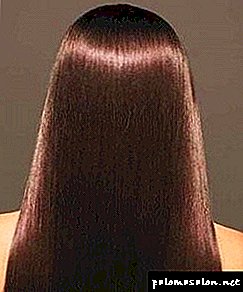
Natural paint is a powder with a specific odor and marshy color. The leaves of lawson, from which the powder is made, contain tannin, a natural dye that has an orange color. It is almost impossible to see this pigment in a hair dye powder because of chlorophyll.
When the leaves are crushed and diluted in acid (for example, in lemon juice) or in plain water, the coloring matter is released due to the dissolution of the membranes.
In this regard, when applying funds to the strands, the coloring elements are released, whereby the entire structure of the hair is colored with henna. This explains that it is so difficult to wash it off for a long time.
Dyes of chemical origin, not containing hydrogen peroxide, simply envelop the hair.
If they contain hydrogen peroxide, oxygen is released, while the hair is also painted completely, and not just enveloped.
In combination with natural dyes, chemical paint does not fit well.
In this regard, there are two possible results of staining:
- When using chemical paint its color does not appear at all. This is due to the fact that in some cases artificial pigment is not capable "Drown out" natural dye
- The color may not turn out as expected, because under the influence of tannin the artificial pigment pigment gives an unpredictable reaction.
Some women dye their hair after applying natural products using chemical dye with basma. Even she is not able to get rid of the appearance of an unpredictable tone - bright orange, marsh, green. Even if at first glance it will be imperceptible, in daylight the colored strands get an unusual shade.
What to do?
Given the opinions of experts about what effect can be achieved, some women completely refuse to repaint curls. Moreover, the masters in the salon also usually refuse to carry out hair dyeing after using henna, if it has not yet passed at least a month after this event.
What options do you have for those who want to dye their hair after using this dye?
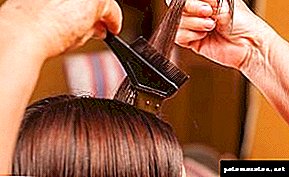
- Wait until the curls grow back and then haircut. Considering how much time it takes, and how much
sorry to say goodbye to their curls, this option is almost never used by anyone - Wait for the color to wash off or darken. It will take at least a month, and the color will not disappear all the same, so for those who want to urgently dye their strands in a different color, this option also does not work,
- Wash off henna. Despite the fact that it dyes the entire hair, this can be done using certain means. When you manage to do this, you can safely choose any tone you like and paint curls.
What to wash off?
There are many tools that can be used for this.
One of them is vegetable oil.
Here's how to use it:
- Heat the vegetable oil with a water bath until it reaches room temperature,
- Apply the oil on the roots and curls themselves, on top we put on a regular shower cap, we wrap up our heads with a towel,
- Wash off the oil in an hour (not earlier). While it is still on the head, periodically you need to warm up the mask with a hair dryer.
One such procedure is not enough to get rid of the color, so you need to repeat it several times / week.
It is used for rinsing and vinegar (9%). Here's how to prepare a tool that allows you to wash the henna, to subsequently dye her hair after a different color:
- In 1 liter of water diluted 1 tbsp. l vinegar, stir,
- Pour the resulting solution into any container in which you can lower the strands,
- Keep the curls in acetic solution for about 10 minutes,
- Wash your hair with shampoo.
If you use this mixture three times a week, you can see good results by the time it ends.
Kefir and yeast also help wash the color:
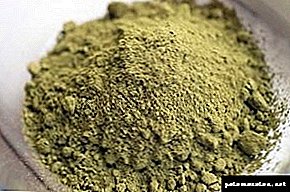
- In a glass of preheated kefir we dilute 40 g of live yeast, stir,
- Apply the mixture on the strands, wait 2 hours,
- Now wash your hair with running water and shampoo.
To speed up the results, you can repeat the procedure even daily. Besides the fact that it has the effect of washing off henna, this composition is also a good mask for curls, which allows you to strengthen them, to enhance growth.
One of the most effective means - soap, which is alkaline. It has the property to open hair scales, which means that with its help the paint will quickly wash off the hair. To wash off the color, you need to completely replace the shampoo with laundry soap, but in this case, do not forget that the hair can become dry. Nutritional masks, lotions, balms, etc. will help to avoid this.
Some women are interested in the question of whether it is possible to dye hair already colored by other means with henna. The reaction between the pigments will be similar - the paint will either not be taken, or the tone will turn out to be distorted, will have an unexpected shade. In this regard, you must either wait until the product is washed off, or use the methods of washing off the color.
In some cases, it is possible to achieve the desired tone, despite the fact that henna was recently used, but if you are not inclined to experiment, it is better to get rid of the color that it gave to the curls.
Decided to switch to natural coloring, and then tired? How to return to the paint after henna, without sacrificing your own curls? From the frightening stories sometimes redhead hair stands on end! Do not despair, we decided to find out this question. We report!
Features of henna
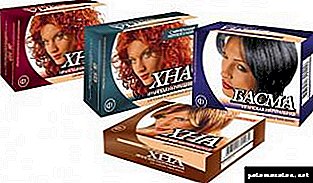 Get this unique paint from the leaves of the lawsonum plant. In the East, it has long been used for a variety of cosmetic and therapeutic purposes.
Get this unique paint from the leaves of the lawsonum plant. In the East, it has long been used for a variety of cosmetic and therapeutic purposes.
This eastern assistant has also come to us for a long time, there are few people who are not familiar with this product.
Henna dyeing is quite popular so far, although the assortment of stores has countless color compositions.
Among the advantages of this method recognized safety and practicality, because the procedure can be successfully carried out at home. Henna also has a beneficial effect on the condition of the hair, strengthening and nourishing the roots and the bulb. Often it is used in the composition of homemade cosmetic masks, in the treatment of dandruff and for the overall healing of the hair.
The big advantage of this paint is its naturalness and affordable cost, as well as the ease of dyeing in hair color milk chocolate or red. Unlike organic cosmetics of world famous brands, its acquisition will not significantly affect your budget, especially since you can buy the appropriate composition in almost any store.
Is it possible to dye hair after henna?
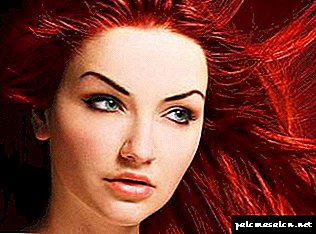 The principle of the effect of henna on the hair structure is very simple: the molecules of tinin in the composition of the mixture penetrate deeply into the inner layers of the keratin sheath and are firmly bound to it.
The principle of the effect of henna on the hair structure is very simple: the molecules of tinin in the composition of the mixture penetrate deeply into the inner layers of the keratin sheath and are firmly bound to it.
In this way, henna makes hair thicker and thicker while restoring damaged and weakened areas.
Such a strong connection is not always beneficial, because it is hard enough to wash off henna
That is why It is not recommended to use ordinary paint and hair dye after applying henna. The fact is that the dye pigment of artificial origin envelops hair from all sides.
If hydrogen peroxide is included, a chemical reaction is obtained, during which oxygen is released and lightens the hair pigment. The use of chemical dyes after applying natural does not always bring the desired effect.
Possible negative reactions:
- Dye unevenly dyes strands of hair, penetrating only in the place of already washed pigmented areas.
- An unexpected side effect may be a coloration in green, blue and blue.
- Natural pigmentation after applying henna can be enhanced by a chemical oxidant for hair dye and you get a bright red gamma.
- After dyeing, a copper shade will still appear even on a different color.
- Visible changes in color will not, even sat down to use strong paint.
Required wait at least three weeks between treatments. During this time, the pigment will have time to slip a little from the hair, and the paint will work better. In individual cases it is better to suffer a month or more.
A special “danger” is the coloring with a mixture of henna and basma. Thus, they usually try to get a darker tone, but the further use of chemical staining may give an unexpected green tint.
This concerns not only light colors, but even chestnut or black color, which can sparkle with green or blue sparks in the sun.
 Attractive nobility and haze of shades of ashen has long been a desirable result when dyeing hair. However, they are quite difficult to achieve, especially at home. How to choose the hair color ashy shade and who is suitable for such a color, you will learn from our article.
Attractive nobility and haze of shades of ashen has long been a desirable result when dyeing hair. However, they are quite difficult to achieve, especially at home. How to choose the hair color ashy shade and who is suitable for such a color, you will learn from our article.
Highlights hair allows you to change the usual way and create a truly unusual hairstyles. Read about the best dyes for hair coloring here.
Detergent
Despite some facts and negative experience with the use of paint after henna, such staining does not always bring only disappointment.
It all depends on the structure and natural color of the strands, as well as on the paint used and the period that has elapsed after using henna.
In any case, the result is difficult to predict, and few people will want to carry out such experiments on themselves, therefore there are less risky methods to get rid of a negative chemical reaction.
The methods of bleaching hair after henna are diverse, so you can choose the most suitable way for you. You should not rely on the instant effect: as mentioned earlier, henna penetrates very well into the hair structure. It will take at least a month of use for the effect to be noticeable. The duration of the course depends on the individual characteristics of the organism, as well as the condition of your hair.
Cold shades of hair colors are now more than ever in trend. Choosing a suitable color for yourself, do not forget about the basic rules of color combination, so that the chosen option is guaranteed to fit your skin.
Oil masks
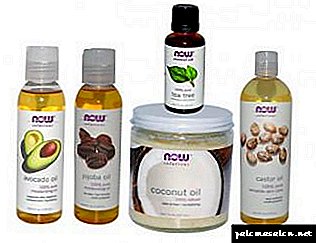 To do this, you must use natural oils, perfect olive, coconut or jojoba.
To do this, you must use natural oils, perfect olive, coconut or jojoba.
Heat a small amount in a water bath, avoiding boiling. Rub the mixture into the tips and distribute along the length.
Cover the head with a plastic cap and a towel. Keep on hair for at least an hour, periodically warming up with a hairdryer.
In addition to removing paint from hair, these masks perfectly nourish and tone up the scalp and hair. Use once or twice a week until the result is obtained.
Acetic rinse
Dilute table vinegar (in a liter of water - a tablespoon) diluted in warm water, use for rinsing or simply immerse your hair in it. Keep your head in this position for at least half an hour, then use regular shampoo. This method must be applied at least three times a week.
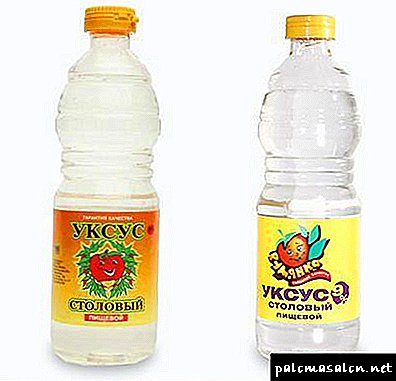
One of the most effective hair growth activators is red hot pepper. Burning substances entering it have a warming effect on the skin, they stimulate the work of the hair follicles and thereby activate the growth of curls. Pick up the best recipes of masks with red pepper for hair growth.
Kefirno - yeast masks
Warm kefir mixed with Baker's yeast (proportions: 40 grams of yeast per cup of kefir). The resulting mixture to give a little brew and then apply to the hair. Additionally, wrap your head with a towel and wait for about an hour. Such masks can be done at least every day, if you have the necessary time and desire.
Swept away mask
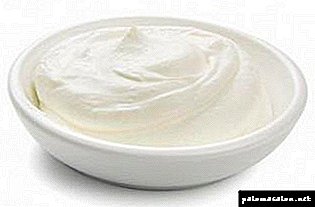 This method is used to mute the color, and not to completely remove it. It is best to take homemade sour cream, which is a little acidified.
This method is used to mute the color, and not to completely remove it. It is best to take homemade sour cream, which is a little acidified.
Choosing any convenient method of application, spread the mixture over the head and wrap with a towel. After an hour, rinse with warm water, if necessary, along with shampoo.
Split ends - one of the most common problems with hair, which often occurs in girls with long curls. The split ends can be treated with various cosmetic oils. Find out how to treat dry hair with oil.
Quick way
 If the shade after coloring does not suit you completely, you can use the express method.
If the shade after coloring does not suit you completely, you can use the express method.
To do this, moisten the cotton wool with alcohol and wipe each curl. You must use a medical alcohol, at least 70%, and also make sure that the fleece does not dry out.
After processing all the strands, moisten the hair with any suitable oil and cover it with a heat-insulating cap. After waiting 40 minutes, rinse your hair with shampoo. After two or three steps, the hair will noticeably change its shade.
The disadvantage of this method is considered serious chemical effects on hair, after which they can fade and become more brittle. To avoid this, it is necessary to alternate procedures with firming and repairing homemade masks or purchased compositions.
Watch the video: the story of turning into a blonde after henna staining
Slow hair growth is fixable. In such cases, both homemade masks from improvised and branded work perfectly. Read more on effective hair growth masks.
Hope
I have been using henna for a long time, but with age I began to notice that it could no longer completely cope with gray hair. I do not know what the reason is, the composition may have become wrong, and age-related changes may. Now I use the usual hair dye, the result is better, although the hair was not so obedient. I decided to alternate the procedures in order not to injure my hair too much. Paint after henna is taken well, but many say it is possible to turn green or blue. I don't want to check the rumors, so I usually wait a month, and only then I use paint.
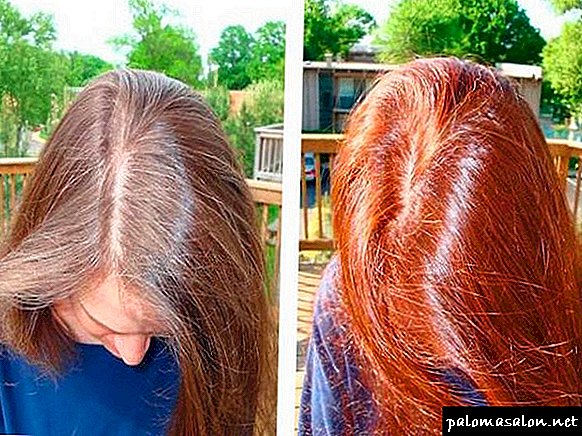
Victoria
Once there was a curious case of applying paint after henna. And everything turned out almost by accident, I just forgot that I had tried a new mask based on colorless henna. Well, that hair is not painted too strongly, but at the tips have become almost blue. My natural hair color is light brown, usually in an ashen blond color. I had to use the tint balm and pretend that it was intended. Next time I will be more attentive to such things.
Yana
I paint with henna for a long time, alternating between the usual paint, and from different companies, but nothing supernatural has ever happened. I still can’t find a comfortable hair color for myself, so I don’t stop trying new tones. I like to use henna, because the hair is more alive and it is not noticeable that it was painted, but the limited range of colors does not suit, I want new experiments.
Iranian henna is a natural and effective pigment for hair, which has been used for centuries. In the East, this plant has long been used for cosmetic purposes, because in addition to the decorative effect, it has good healing properties. The only drawback of such staining is the inability to use conventional paint after henna. In order not to get an unpredictable result and not shine with all the colors of the rainbow, it is better to wait for a certain period of time, even if henna was used for therapeutic purposes. The best way to protect yourself in such experiments is described in the information in our article.
We recommend that you also read in more detail about men's hair dye from gray hair.

